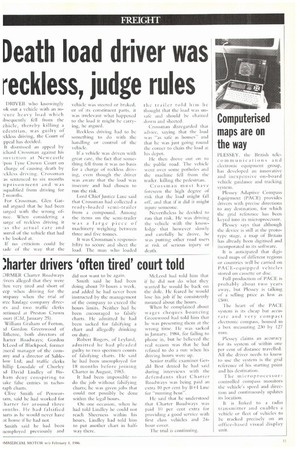Computerised maps are on the way
Page 11

If you've noticed an error in this article please click here to report it so we can fix it.
PLESSEY. the British telecOitiitituuliCJtiOuls and electronic equipment group, has developed an innovative and inexpensive on-board vehicle guidance and tracking syStern.
Plessey Adaptive Compass Equipment (PA( E) provides drivers with precise directions to any destination, tbr which the grid reference has been keyed into its microprocessor.
Plessey says that although the device is still at the prototype stage, a map of Britain has already been digitised and incorporated in its software.
It is anticipated that digitised maps of different regions or countries will be carried on PACE-equipped vehicles stored on cassette or disc.
Full production of PACE is probably about two years away, but Plessey is talking of a selling price as low as .1300.
The heart of the PAGE system is its cheap but accurate and very compact electronic compass, housed in a box measuring 230 by 127
111111.
Plessey claims an accuracy for its system of within one per cent of distance travelled. All the driver needs to know to use the system is the grid reference of his starting point and his destination.
The microprocessorcontrolled compass monitors the vehicle's speed and direction and continuously updates its location.
It is linked to a radio transmitter and enables a vehicle or fleet of vehicles to be tracked precisely on an office-based visual display unit.




















































